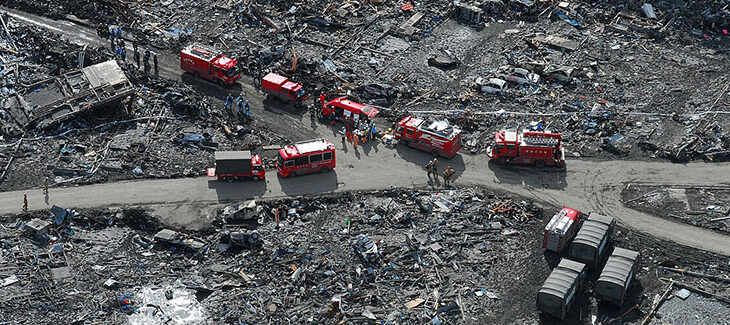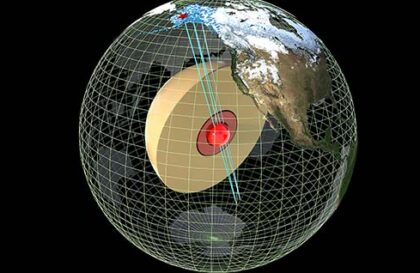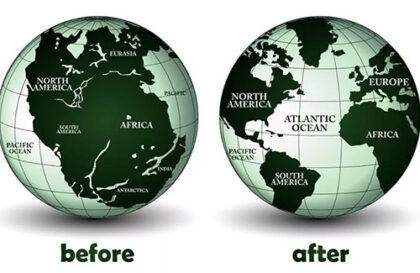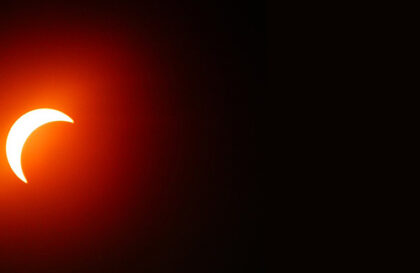Simulating an earthquake
The epicenter is located at a depth of 80 km directly below the city. Like a gas torch, rising magma flows cut the tectonic plate straight below the town. The slab splits into two parts; one part runs over the other, and the other dives under the first. Although they move no faster than a person’s nails grow, the degree of destruction depends on the force of the plates hitting each other. The power of impact is characterized by magnitude.
So, the city is located in the active earthquake zone.
First, brick buildings with 5+ floors are destroyed, then higher panel ones, skyscrapers built after 1970 are mainly designed for magnitudes up to 6-6.5; skyscrapers before 1970 will be among the first to collapse (if there were no special anti-seismic modifications), low-rise ones will last the longest (up to 3 floors) wooden houses and bridges on guy ropes.
Magnitude, according to Kanamori
Let’s look at the manifestation of earthquakes of different strengths on the Kanamori scale. The scores on the intensity scale (approximately) are indicated in parentheses to assess the scale of destruction depending on the magnitude:
4 (4) It seems as if a heavy truck is passing; window panes and dishes clink, and doors creak. In Brooklyn Heights, in Manhattan, they didn’t even notice.
5 (5) Felt on the street; people wake up, liquid splashes out of the dishes.
People woke up and got nervous in the skyscrapers of Manhattan,
The Unisphere, a large steel model of the globe, collapsed in Queens.
The gray slate spires and brick-red facades of Madrid’s Plaza Mayor are beginning to crack.
Panel houses in Moscow are cracking, church bells are ringing on their own, and the walls of the Moscow Kremlin are crumbling.
Old buildings and houses in Tehran may collapse.
6 (6) Felt by everyone; frightened people run out into the street; plaster and brickwork are cracking; furniture moves and turns over; window glass breaks.
Skyscrapers built before 1970 (the Empire State Building, the Chrysler Building, and the Flatiron Building, also known as the Iron House) began to collapse. The Joker’s Staircase in the Bronx breaks down.
The city’s business center is cracking (Cuatro Torres Business Area is the leading financial center with four giant skyscrapers). The La Latina district is in ruins in Madrid, and the Royal Cathedral of St. Francis the Great is collapsing.
In Berlin, Charlottenburg and Wilmersdorf are in ruins.
Panel Moscow (sleeping areas of Cheryomushki, Strogino, Ramenki, and Krylatskoye) was utterly destroyed; water from the Moscow River entered the metro tunnels.
In Tehran, cracks appear and grow in Touphaneh Square and the building of the Islamic Institute.
7 (7-8) Difficulty standing; felt by drivers of moving cars; plaster crumbles, bricks, and ceramic tiles fall; big bells are ringing; waves appear on the surface of reservoirs, some brick walls, chimneys, towers, monuments collapse; tree branches break off; Cracks form in damp soil.
The entire Brooklyn Heights has turned into ruins (brick buildings), the above-ground subway is breaking down, and the rails are bent.
In Madrid, four skyscrapers in the business center are crumbling and falling. The whole city is ruins.
The Spandau Citadel cracks in Berlin, and the Berlin S-Bahn suffers accident after accident.
Moscow City is being destroyed.
The Freedom Tower, the main symbol of the capital of Iran, the Tehran Bazaar, is collapsing.
8 (9-10) General panic; building frames and underground pipes burst; Significant cracks and sand craters form in the ground. Most brickwork of frame structures and foundations collapse, severe damage to dams and embankments, bridges collapsing, and powerful landslides.
The metro and private houses in Grunewald in Berlin are collapsing.
The southern half of Moscow falls on the Moscow aulacogen (depression), several hundred meters deep, so deep foundation faults run through the city center and along its southern border. The city is divided into two parts.
In Tehran, an industrial zone in the south of the city was completely destroyed, and the International Tower (the tallest earthquake-resistant building after the TV tower) cracked.
9 (11-12) Serious deformation of railway tracks; underground pipelines fail—almost destruction of buildings, violation of the horizon line, and individual objects flying into the air.
Manhattan sank to the bottom, into the graveyard of slabs towards the center of the Earth. The non-island areas were utterly destroyed, but the lucky ones survived.
In Moscow, one part of the city collided with another. The lower one sinks and goes to the graveyard of slabs.
In Tehran, there is severe destruction in the new areas of Aryamehr and Tehran-Pars.
Seismic protection
Earthquakes with a magnitude of 7 or more on the Richter scale are beginning to be considered dangerous for buildings and structures. Therefore, no additional measures are required during design and construction in areas predicted to have lower seismicity.
The structure most resistant to earthquakes looks like this: more or less symmetrical in plan, cut by expansion joints into small sections, large panels, with load-bearing structures running from bottom to top connected to inter-floor floors. The rigidity of such a building should change (decrease) with height. It is located on the seismic protector (damper).
The strength of steel is approximately ten times greater than that of the most robust concrete and masonry, so earthquake resistance of a structure is usually achieved by using a solid steel frame or walls that can withstand a design earthquake without destruction and with minimal loss of life. An example of such a building is the dormitory building of the University of Berkeley, reinforced with an external anti-seismic steel truss.
A well-built, low-rise house with a wooden frame is one of the safest places to wait out an earthquake.
In new houses, walls and floors are joined using special metal connectors; in houses of earlier construction, you can often see traces of professional reconstruction – in particular, bolted connections. Thanks to this, the entire building frame moves as a single unit during an earthquake. Additional steel members must connect the foundation to the vertical supports.
Wooden houses are highly resistant to earthquakes. Much more dangerous should be considered brick houses, in which no special anti-seismic reinforcement measures are provided, and buildings made of a material that engineers call non-plastic concrete. If the Northridge earthquake had occurred not at 4:30 in the morning but during the working day, there would have been 20-30 times more victims, as special studies show.
To calculate buildings that are maximally resistant to earthquakes, it is necessary to take into account not only the loads (average accelerations during a 10-magnitude earthquake are about 0.8 g) but also the natural frequencies of buildings – rigid ones have an oscillation period of 0.2-0.5 s, soft – 1-2 s, as well as the length of facilities (with a building length of more than 30 m, torsional vibrations also begin to affect).
Buildings “floating” above the ground are more earthquake-resistant
Credit: Air Danshin
Earthquake-resistant construction, however, does not aim to build a practically indestructible building: it is more practical and economically feasible to give the building the ability to “float” above the shaking earth.
To solve this problem, seismic protectors and dampers are used – a type of seismic insulation that dramatically increases the seismic resistance of buildings.
Now, manufacturers offer various dampers: metal, liquid, special alloys with memory, and unique damping walls.
The most earthquake-resistant building in the world
The 335-meter-tall Wilshire Grand Center building in Los Angeles consists of 73 floors. Despite its size and graceful shape, the architects say it is the most earthquake-resistant building in the world.
Credit: FredChang931124, Wikimedia Commons
The building is expected to withstand earthquakes of up to magnitude 7.4. This is stronger than the 1994 Northridge earthquake in California. Engineers calculated that during strong shocks, people on the upper floors would experience overloads of up to 4 g (almost like when a spaceship takes off).
To make a building super stable, it needs a massive core. This is the reinforced concrete parallelepiped in the heart of the skyscraper. The height of this rod is 259 meters above the earth’s surface. It goes underground for another five floors. The width of the sides of the parallelepiped is 39 by 9.75 meters. The rod rests on a powerful concrete pad more than 5 meters thick. It took over 37 thousand tons of concrete to pour this pillow at the beginning of 2014. This was the most extended continuous foundation pour in the history of construction.
Three rings of strength complement the stability system, each several stories high. These are metal structures that wrap around the perimeter of the building. In the event of tremors, they will work as shock absorbers for a car: they will absorb and absorb the shock. The rings can withstand an impact load of almost 4 thousand tons.
Earthquake warning
In the United States, the National Network for Earthquake Engineering Simulation (NEES) has officially launched, designed to bring new knowledge to engineers and geologists in this area.
Fifteen research centers and laboratories belonging to various universities and institutes in the United States studying the effects of earthquakes were connected by a high-speed Internet network, which allowed these laboratories to function as a single whole.
Banner image: Wikimedia Commons/ U.S. Navy photo by Mass Communication Specialist 3rd Class Dylan McCord/Released
Image credit:
https://en.wikipedia.org
https://www.modscape.com.au
https://www.burnhamnationwide.com






